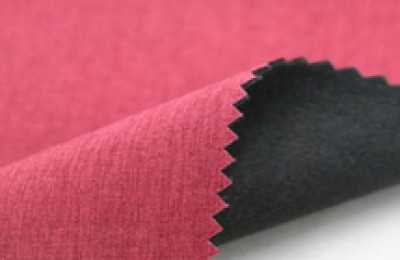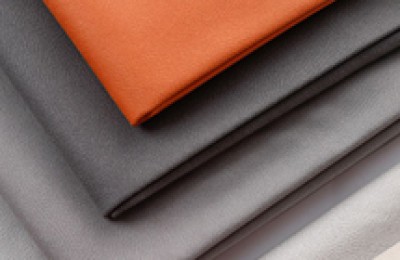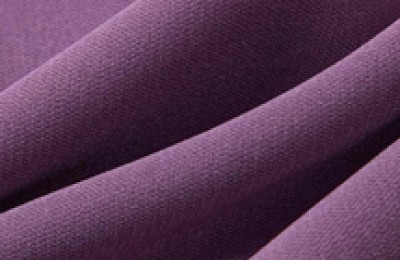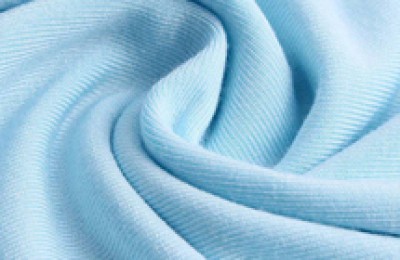This time the international version of TikTok is targeted by the United States, it is actually not an isolated case. In recent years, there have been ZTE and Huawei, and then companies on the US Entity List. As long as the United States feels that this company may pose a slight threat to its global hegemony, or even if the United States feels that it will be beneficial to sanction this company in the future. Picture, it will use various reasons to add these companies to the “blacklist”.
In the early morning of July 21, the Bureau of Industry and Security of the U.S. Department of Commerce suddenly announced that 11 Chinese Enterprises are included in the “Entity List”, including even three textile enterprises: Changji Esquel Textile, Hotan Teda Clothing, and Nanjing Xinyi Cotton Textile. On May 24, the Huafu subsidiary of the world’s largest color spinning enterprise was also included in the list. .
From a national level, reciprocal countermeasures have not been interrupted: the United States has given China a As taxes are raised on the manufacturing industry, China also raises taxes on U.S. agricultural products; the United States closed the Chinese Consulate General in Houston, and China immediately closed the U.S. Consulate General in Chengdu… But the game between great powers is never a simple matter. From a micro perspective, textile companies also need to “find new ways.”
Recently, the term internal circulation has become quite popular.
In the economic community, internal circulation has been discussed for several rounds, but the impact has been limited to discussions and brainstorming at meetings. What made this word popular was that on June 18, a big boss made a written speech at the Lujiazui Forum: “We are still facing greater pressure from the economic downturn, but the situation is gradually changing for the better. A domestic cycle A new pattern of dual-circulation development is taking shape, with China as the mainstay and international and domestic mutual promotion.”
Roughly speaking, the external cycle corresponds to the export foreign trade market, and the internal cycle corresponds to the domestic consumption market.
The domestic demand market breaks the shackles of the “off-season” and destocks to boost confidence
In the textile industry, during the 40 years of reform and opening up, the development of the textile industry has always been export-oriented due to high quality and low price. However, some countries led by the United States now feel that China’s sales are too cheap, and they themselves As a result, the country’s textile industry cannot get off the ground at all, so it is hostile to China. Coupled with the impact of the epidemic, overseas markets have shrunk sharply. Therefore, some foreign trade orders can only be digested back to China. This is the so-called “internal economic circulation.”
In fact, from the beginning of the Sino-US trade war last year to this year’s COVID-19 epidemic, some textile foreign trade companies have subconsciously shifted their focus from foreign trade to domestic trade.
Manager Wang, the person in charge of a weaving company that specializes in stretch fabrics, said that in previous years, their order composition was 80% foreign trade, and two However, this year, on the one hand, foreign trade has been sluggish due to the impact of the COVID-19 epidemic, and on the other hand, we have consciously opened up new customers, so we have gradually shifted our focus to domestic trade, which currently accounts for more than 70% of the total trade volume. .
Good news came from the domestic demand market after the silence. In late July, the textile and apparel market broke the shackles of the “off-season”. Many textile and apparel bosses said: “This wave of market conditions is well received.” We were caught off guard, and we finally got some goods!”
According to monitoring data, the recent transaction atmosphere in the Jiangsu and Zhejiang markets has improved compared to the previous period, and the transactions are mostly concentrated in autumn and winter fabrics, domestic trade and foreign trade markets. All have certain performance, especially in the domestic trade market.
“From the time after the Dragon Boat Festival to last week, the market was really slow. Sometimes I would sit in the sales department for an entire afternoon and there would not be a single call to purchase gray fabrics,” said Mr. Shen, who uses elastic fabrics on all sides, said, “But this week is a completely different scene. I now receive various calls early in the morning to ask for gray fabrics. 20,000 meters here and 50,000 meters there. Recently, in the warehouse, The inventory has been depleted, and some orders have to be ordered and need to be queued up.”
Except for better elasticity In addition, orders for other conventional autumn and winter fabrics are also better than the previous period, such as Shumei silk, gallbladder, etc. used for lining, warp knitted suede, velvet, etc. used for sofas. In addition, medium-thick clothing fabrics It also has a certain performance, especially when it is used to make down jackets, cotton jackets and other fabrics after special finishing processes, and it performs well in market proofing and testing.
It can be seen that the market has indeed released positive signals. Whether it is the price increase of raw materials or the placement of autumn and winter orders, at least the social inventory that has been rising steadily in the early stage has been stabilized. The increase in gray fabric inventories of most weaving manufacturers has begun to slow down or their production and sales have been able to level off. The inventories of a few manufacturers that produce marketable products have even declined slightly, which has also boosted the confidence of market participants.
According to traditional practice, June and July are the traditional off-season for textiles and clothing, and phenomena such as load reduction and inventory accumulation are also common in the market.
What is different this year from previous years is that some companies experienced a state of “low demand and high load” in the second quarter. Its own inventory has reached a high level in recent years, and the financial pressure is even greater. Therefore, in mid-June, the market has accelerated its rotation and holiday operations. The main cluster load in Jiangsu and Zhejiang has been hovering around 60%, and the lower one is around 40%. .
In the face of the current market situation, companies that have received good orders have begun to operate at full production, and companies that have received average orders have also postponed their holiday plans for August and September. market conditions, resulting in a slight increase in the market’s start-up load.
According to monitoring data, the recent water-jet loom start-up has rebounded to around 70%, and the warp knitting start-up has been around 70-80% , the performance of circular knitting machines was slightly worse, at about 40%, an increase of 4 percentage points compared with last week, and compared with the same period last year, the difference is not big.
Apparel foreign trade market: Risks still exist, focus on developing new markets
Today’s general environment is still deeply affected by the epidemic, and the textile and apparel industry is still Facing the dilemma of slow recovery of terminal consumption, especially the weak foreign trade market, and the poor economy, the unemployment rate and the number of bankrupt companies in foreign countries are still rising. It can be said that the impact of the development of overseas epidemics on the economy, and even on the textile and garment industry, has not been It will decrease over time. If the epidemic recurs in the autumn, foreign trade economic activities will easily be “suspended” again. Then foreign trade cannot be done? Of course not, the number of orders in Europe and the United States is relatively large, and the profits are relatively generous, but when receiving While maintaining orders, we should also focus on developing new markets.
In recent years, our country has been advocating the construction of the “Belt and Road” plan to cope with the complex and profound changes taking place in the world today. Changes, and the countries along the “Belt and Road” are very good trading partners.
In addition, in 2020 The Regional Comprehensive Economic Partnership (RCEP) will be signed, which will establish a free trade agreement for a unified market among 16 countries by reducing tariffs and non-tariff barriers. If RCEP is successful, it will cover about 3.5 billion people and the total GDP will reach 23 trillion US dollars. , accounting for 1/3 of the global total, the area covered will also become the world’s largest free trade area. Now, except for India, the remaining 15 countries have concluded negotiations and started legal text review.
Therefore, textile and apparel people have begun to explore markets in these countries and regions, especially countries such as Japan and South Korea. Due to relatively better epidemic control, the textile and apparel market demand has basically returned to pre-epidemic levels.
Catalyzed by the epidemic, the United States’ tendency of “unilateralism” has become more and more obvious. With President Trump being a moody and re-elected president, the political risks in Sino-US trade have become increasingly greater.
For textile and garment enterprises, under the influence of the epidemic, on the one hand, they must seize the orders in hand; on the other hand, they should not put their eggs in one basket and turn some of their attention to the domestic market. market, and in terms of foreign trade, we must also actively expand markets in countries with relatively small political risks and strive to be prepared. </p







